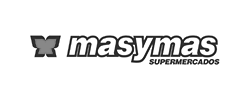Profesionalidad y Confianza en Puertas Automáticas
Entendemos la importancia de contar con soluciones seguras y eficientes para el acceso a su negocio o empresa. Con años de experiencia en la industria, nos dedicamos a ofrecer sistemas de puertas automáticas caracterizados por su profesionalidad, sencillez y confianza.
Nuestros productos están diseñados para integrarse a la perfección con la operativa diaria de su empresa, asegurando un funcionamiento óptimo y una durabilidad excepcional.
Confíe en Zibor para encontrar la solución perfecta que combine tecnología de vanguardia con la facilidad de uso que su negocio necesita. Contáctenos hoy y descubra cómo nuestras soluciones pueden ayudar a mejorar la accesibilidad y seguridad de su espacio comercial.
¿Por qué nos eligen nuestros clientes?
Zibor no solo ofrece productos a sus clientes, tambien se encarga de asesorar y guiar a cada uno de ellos en la mejor opción frente a sus necesidades.
Empresas que confían en nosotros.
Zibor siempre en contacto directo con los que lo hacen posible.








